-990x659w.png)
I was teaching English Language Proficiency (MPU3022) to 20 pre-service teachers from the Malay Language option, placed at their first semester of the 4-year Bachelor of Teaching programme at the Institute of Teacher Education Malaysia Ipoh Campus in 2020. In one of the lessons, pre-service teachers were allocated 1 hour of lecture class and 1 hour of tutorial class to produce a piece of narrative. “Shall I teach them to write an alternative genre instead of the typical way of writing a narrative?” The thought of giving the pre-service teachers a different writing experience prompted me to amalgamate digital technologies and process writing in enabling the pre-service teachers to write and publish their narratives as an e-book using Flipsnack application (see Figure 1).
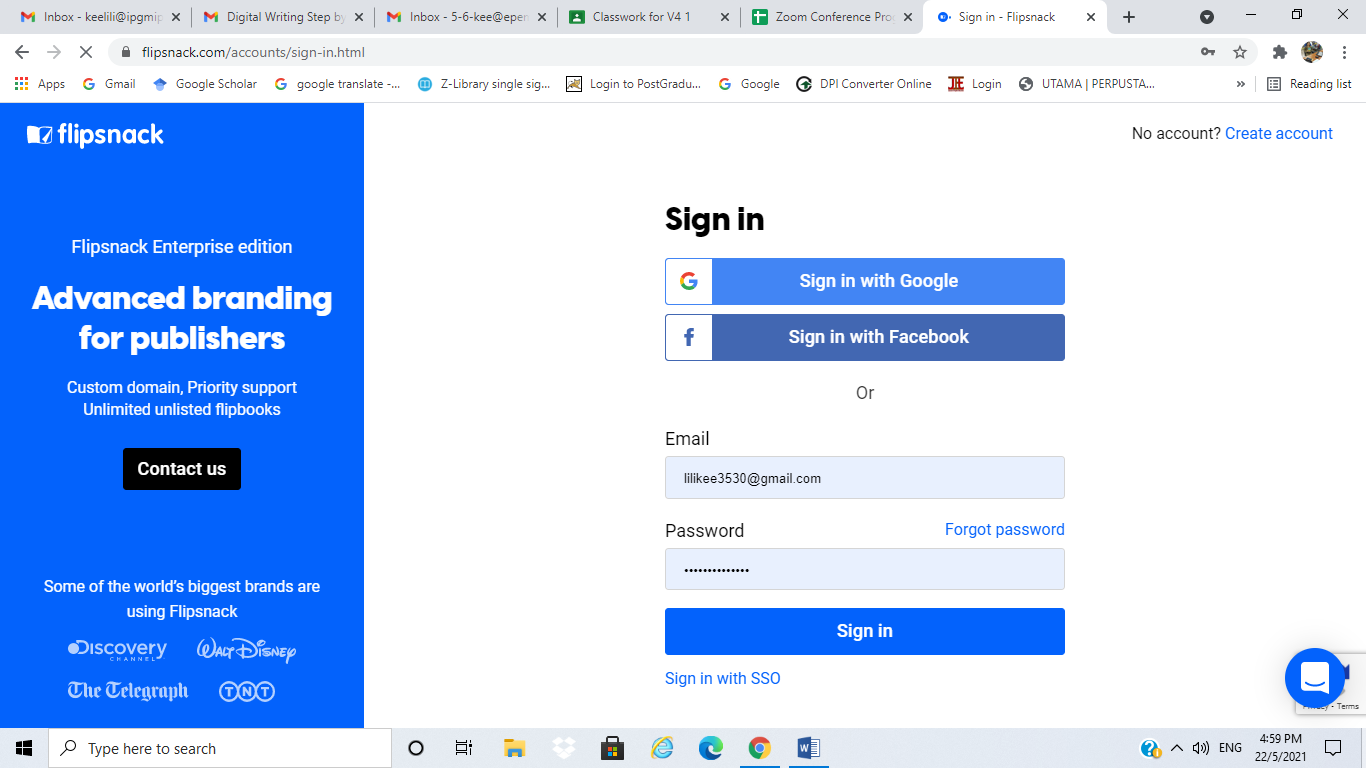 Figure 1: Flipsnack application
Figure 1: Flipsnack application
At times of covid-19 pandemic, Google Classroom has replaced the normal face-to-face classroom interaction in many settings. This happened to my classes with the pre-service teachers too. Within the constraints of 1 hour of synchronous lecture, I provided input on how to write a narrative and how to publish the narrative using Flipsnack application to the pre-service teachers. There are 10 aspects to take into consideration when writing a narrative:
1. Start with an interesting introduction.
2. Write the narrative in paragraph form.
3. Use capitalization and punctuation aptly.
4. Use rich vocabulary.
5. Include the five senses if possible.
6. Intertwine conversations in the paragraphs.
7. Vary the sentence structures.
8. Include figurative language.
9. Include a plot structure.
10. Include some illustrations.
Noting the constraints of time, I wrote a simple module (see Figure 2) entitled “Digital Writing: An Alternative Genre Step by Step Guide” to aid the pre-service teachers in using Flipsnack application to publish their narratives. With the readily available module, the pre-service teachers could work more independently without much assistance from their teacher educator.
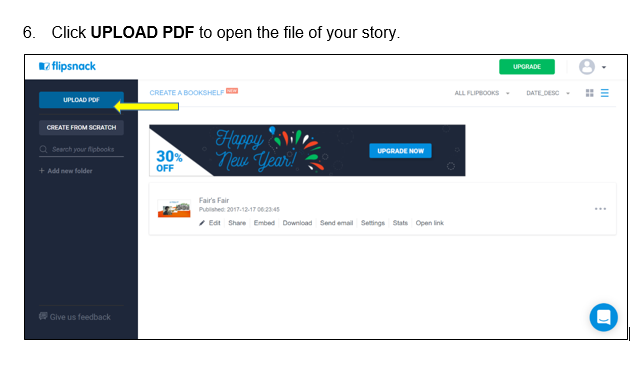 Figure 2: A part of the “Digital Writing: An Alternative Genre Step by Step Guide” module
Figure 2: A part of the “Digital Writing: An Alternative Genre Step by Step Guide” module
Upon obtaining the input in terms of ways to write a narrative as well as the usage of Flipsnack application, the pre-service teachers partook in a writing process to reach the final product in which they published the final drafts of their narratives as an e-book. Initially, they generated ideas such as the characters and setting to be included in their narratives. Next, they focused on the narrative development. The next phase was to structure their narratives. Then, the pre-service teachers put their thoughts into word representations as well as illustrations to be included in the narratives when drafting the narratives. The interesting part was that the pre-service teachers took the effort to draw their own illustrations. They also evaluated the narratives in terms of content, communicative achievement, organisation and language aspects. Then they reviewed the narratives before finally published the final drafts as an e-book using the Flipsnack application. The pre-service teachers underwent the writing process (White & Arndt, 1991) to reach the final product (see Figure 3).
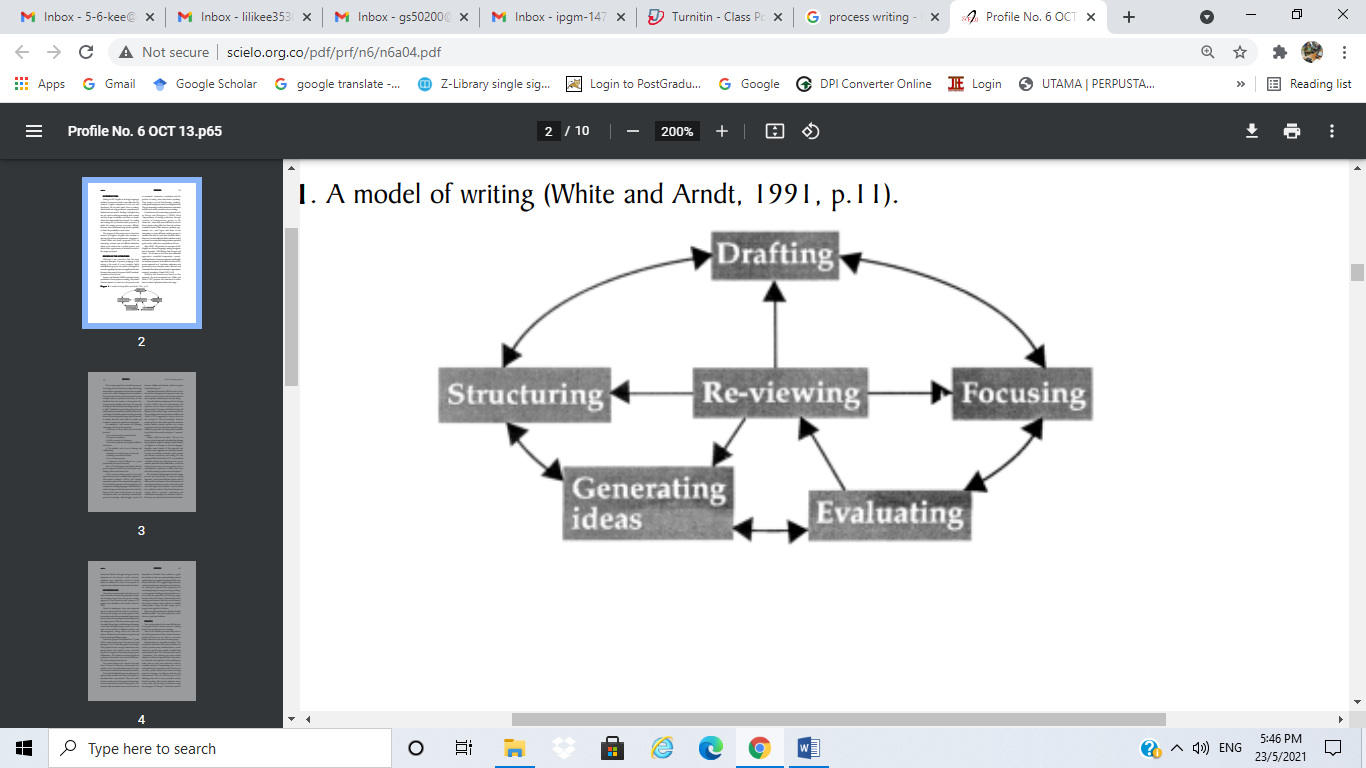
Figure 3: Process Writing by Ron White and Valerie Arndt, Longman, 1991
The pre-service teachers produced wonderful final drafts of their narratives as an e-book. As one example, Tamil Selvi Siva wrote the narrative of “Beauty Is Not About The Fairest Skin”, which can also be found at: https://www.flipsnack.com/TAMILSELVISIVA/beauty-is-not-about-the-fairest-skin.html (see Figure 4).
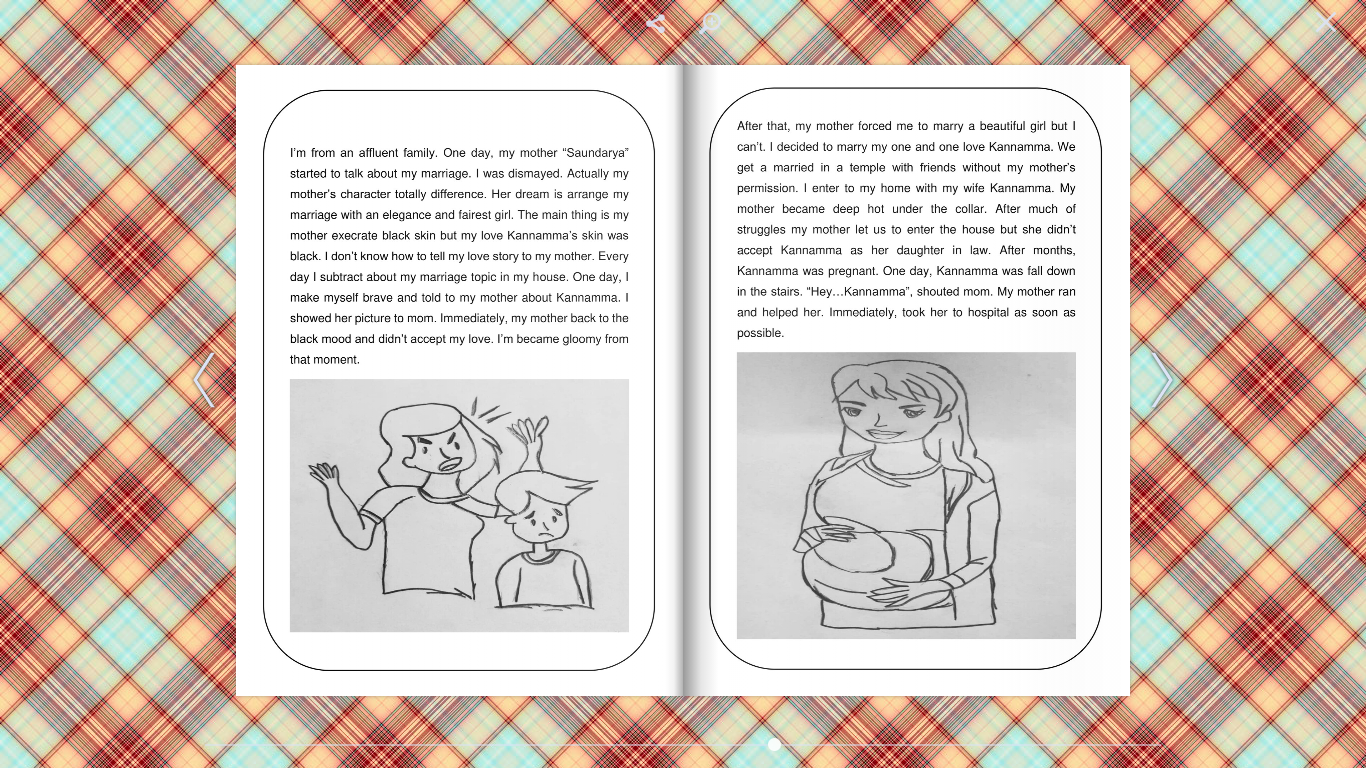
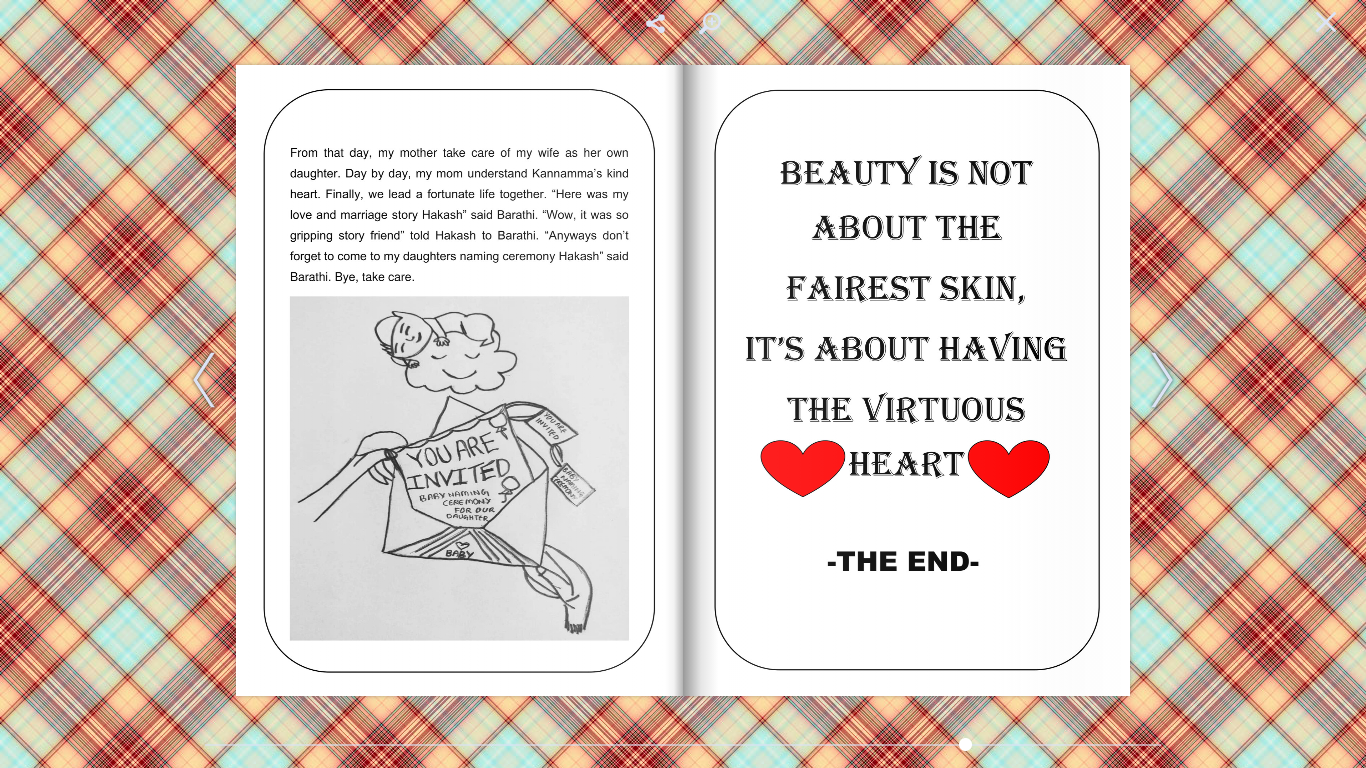
Figure 4 : Amongst the content of Beauty Is Not About The Fairest Skin by Tamil Selvi Siva
To further explain, the narrative started with a captivating introduction. Tamil Selvi Siva included a sound effect (i.e., alarm clock ringing) as an interesting introduction to gain the readers’ attention. She wrote her narrative in paragraph form. There were altogether seven paragraphs. The capitalisation and punctuation were aptly where necessary. She included some rich vocabulary such as “We raced to the hall”, “I was astounded...” and “I was dismayed..”. She successfully captured the readers’ attention through the use of different senses such as sight (Her skin was black as a raven), touch (the drops of rain hit me, we both had a tight hug) and hearing (Ringggg!). She also intertwined interesting conversations with varied sentence structures and wonderful illustrations that she drew on her own. Apart from that, she also included quite a number of idioms such as the apple of my eye, on cloud nine and raining cats and dogs. The plot structure was indeed interesting, in which the events moved from the present to the past and then to the present, hence, the inclusion of flashback was evident in the narrative. The narrative ended with the inculcation of moral value. Apart from relating to the readers that the beauty was not found on the surface but deep level, she moved on to highlight the importance of family relationships.
On the contrary, Tamil Selvi Siva showed some weaknesses in her narrative. As a pre-service teacher who was not of Teaching English as a second language (TESL) option, she was bound to show some grammatical errors in her narrative. Facing constraints of time in writing and publishing the narrative as an e-book, she was not given the luxury to edit numerous times her drafts before reaching the final product. All the weaknesses identified would certainly shed light for the pre-service teachers as well as the lecturer on how to better alleviate the problems faced in future writing activities using Flipsnack application. Apart from Tamil Selvi Siva’s narrative, the other narratives written by pre-service teachers are as such:
1. Dream by Athirah Sofea Asrul Azwan
https://www.flipsnack.com/sofeaa/dream.html
2. Broken by Balqis Harun
https://www.flipsnack.com/CACDDAFF8D6/broken.html
3. Unforgettable Trip by Dehvisri Vengadasalapathey
https://www.flipsnack.com/Dehvisri/unforgettable-trip.html
4. My Favourite Vacation with My Family by Lim Rui Jia
https://www.flipsnack.com/j1205catalogue/my-favourite-vacation-with-myfamily.html
5. The Knight in Shining Armour by Mirza Syahirah Mohayuddin
https://www.flipsnack.com/mija1330/the-knight-in-shining-armour.html
6. Burning by Mohammad Nur Hakimi Ariff Amiruddin
https://www.flipsnack.com/hakimiariff/flipsnack_hakimi-ariff-v4-descriptive-essay.html
To conclude, the writing journey is a stepping-stone for all pre-service teachers to get along with the world of writing and publishing narratives as an e-book. The amalgamation of digital technologies and process writing seems to be the best way as of now to counter the challenges of writing alternative genre in times of Covid-19 pandemic. The initial exposure would pave the way for pre-service teachers to be more engaged in writing and publishing narratives as an e-book in future.
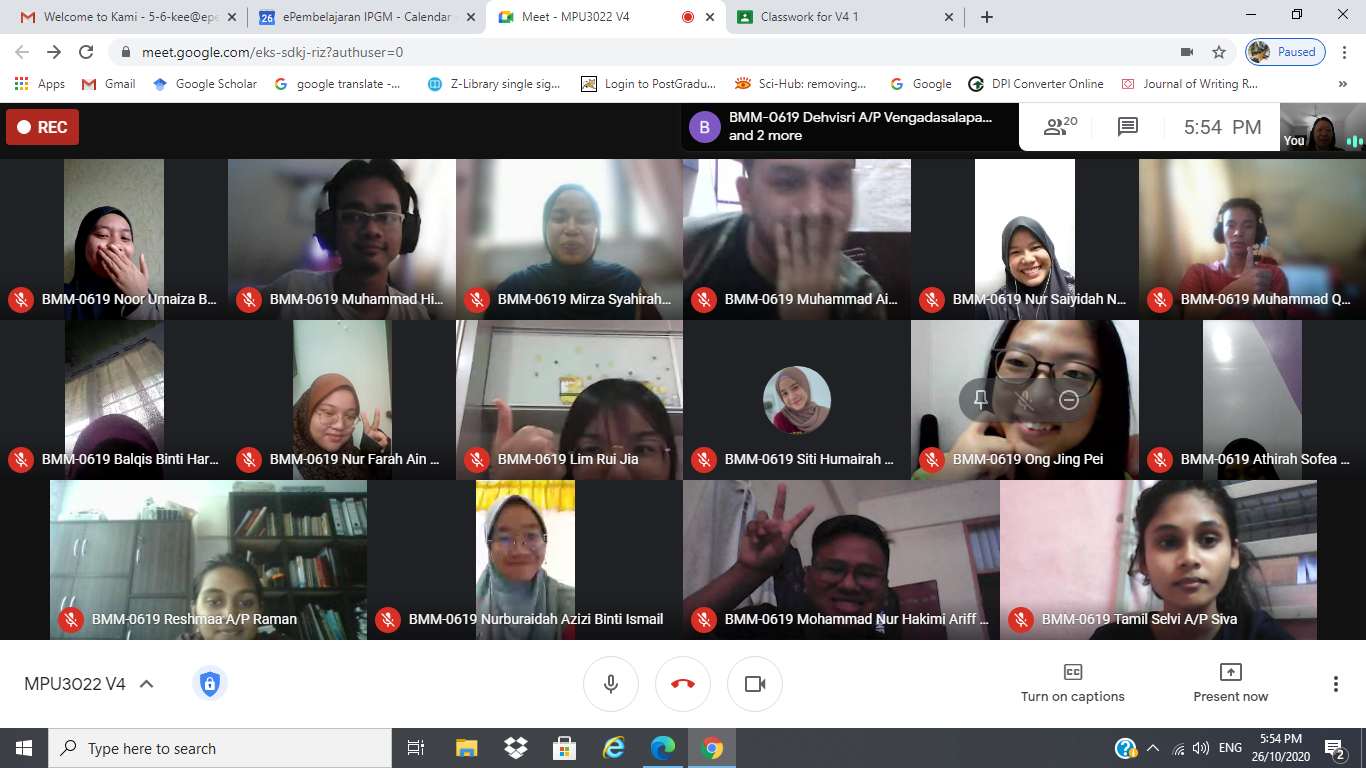
Screenshot of pre-service teachers during one of the Google Meet sessions.
References:
https://www.flipsnack.com/accounts/sign-in.html
White, R., & Arndt, V. (1991). Process writing. Longman
Article written by:
Kee Li Li, PhD
keelili@ipgmipoh.edu.my
Institute of Teacher Education Malaysia Ipoh Campus,
31150 Hulu Kinta, Perak Darul Ridzuan, Malaysia
